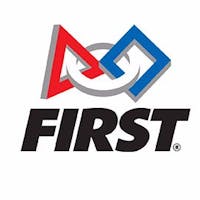What can a 15-year-old from Chino Hills, CA do to help break down barriers and smash stereotypes? Zaina Siyed answered that question by creating the FemSTEM Robotics Scholarship Program, a free STEM program for Muslim girls aged 10 to 14.
In 2016, Siyed was fed up with never seeing girls—especially Muslim girls like herself—competing in the robotics challenges she loved so much. Equally frustrating, she rarely saw positive representations of Muslim women in the media.
So Siyed hatched a plan: she would teach her peers herself. She hung flyers, started a Facebook page and approached mothers in her community—explaining the benefits of STEM education. She secured weekly use of a local prayer room and, with the help of a GoFundMe account, raised money for equipment from local business owners.
Over the course of 15 weeks, Siyed coached eight girls with absolutely no robotics experience. Their goal was to build a robot designed to solve a real-life problem as part of a FIRST® LEGO League robotics competition. Along the way, the girls faced stumbling blocks, fears and frustrations. On the day of the competition itself, donning matching purple hijabs and bandanas, the girls won the Best Overall Performance award.
Siyed’s goals, however, are loftier than just winning robotics awards. She’s using her program to encourage Muslim girls to embrace STEM while helping the world understand that Muslim girls can be strong, intelligent and successful career women.
EdSurge talked to Siyed about her experiences as a robotics teacher and community leader, how she engages students in difficult subjects, and her suggestions for persevering through challenges.

How did you become interested in STEM learning and robotics?
I joined FIRST LEGO League in 2011 when I was 10. I wasn’t super into math or science, but I just loved competitive events. And with FIRST I could compete but also have fun. That was an important part of what kept a little middle school girl coming back to those competitions.
I was also very fortunate at that young, impressionable age to have two female mentors coaching my team; one was in high school and one was a recent college graduate. They were so confident and friendly—but also smart, sharp and excellent coaches and teachers. Having those two female mentors helped me envision myself in the STEM field.

What did those robotics competitions teach you?
All those fundamental skills of working in a team, collaborating with others, managing your expectations, seeing how other people work. And, of course, how awesome it can be to work hard, see your work pay off and win!
But also dealing with disappointment. At my first tournament, my robot malfunctioned right in the middle of the field and I cried in front of all the spectators. I laugh at that memory now but it was important to see how things can go wrong and how you have to deal with them.
It also taught me how to problem-solve. Actually, the whole creation of my FemSTEM program mimics the way the girls approach their training at FIRST. They identify a problem in their community like I did. Then they look at the parameters, what kind of resources they need to solve that problem, and come up with a solution. For me, that problem was girls in my community needing access to STEM.
What were your biggest challenges in creating and launching FemSTEM?
Starting the program wasn’t that difficult. But engaging the girls was tough at first.
When I started this program, teaching FIRST LEGO League was something I knew like the back of my hand. I mentored, coached and taught that material at the robotics center for the previous two years in my freshman and sophomore year of high school.
So it was frustrating at times dealing with girls who were inexperienced, scared and, more than anything, needed to develop a work ethic. I remember coming home in tears thinking, ‘Oh my God, this is going to be a failure. We’re going to go to the competition and they’re just going to be sad and embarrassed.’
But I have to credit them; they were quite brave for venturing into a new subject that none of them had any experience in.
How did you engage the girls?
If you show kids you value their opinions, and treat them as mature beings who can have conversations and a point of view, it improves their self-confidence and their performance.
I also did my best to make them feel like they weren’t adhering to classroom rules. I told them, ‘If I’m speaking, I want you to interrupt me as soon as you have a good idea.’I used the Socratic Method. I’d ask them questions about things they didn’t know. That forced them to do that critical thinking. And I constantly gave them feedback individually and as a team.

What do you think you’ve achieved with FemSTEM?
Of the two shyest girls in my first class, one became the most talented programmer and the other our robot design lead. It was incredible to see that transformation. They took huge strides in their confidence, their willingness to communicate, their excitement about the whole program, each other and the team.
I think for all the girls, being able to go into that unchartered territory of the big scary world of robotics—and do so well in it and see that it’s friendly and doable for everyone—really boosted their confidence; it was an epiphany for them.
Then, of course, the bigger effect came from the media stories. It was such a huge deal to be covered in mainstream media like the LA Times and featured in a Disney Pixar video that was promoted through Facebook and Twitter.
Suddenly I had Muslim women contacting me, saying, ‘This is such an inspiring story!’ Or, ‘My daughter is reading about you,’ or asking, ‘What robotics kit should I purchase for my daughter?’ That's when I really felt like I made a small difference.
In the LA Times article, I talked about how my mom accompanied us and was a bit worried about what it was going to look like when all these girls with hijabs came in. But it was fine; people were complimenting them on their hijabs.
It was funny that my big off-in-the-future goal was for more positive representation of Muslim women in the media and we ended up being that positive representation.

Where does FemSTEM go from here?
I’m taking a gap year before I start university and expanding FemSTEM by having more teams and hosting workshops across the nation. I’m not just targeting Muslim girls now; I want to help all minority girls open their minds to STEM and become more tech literate.



